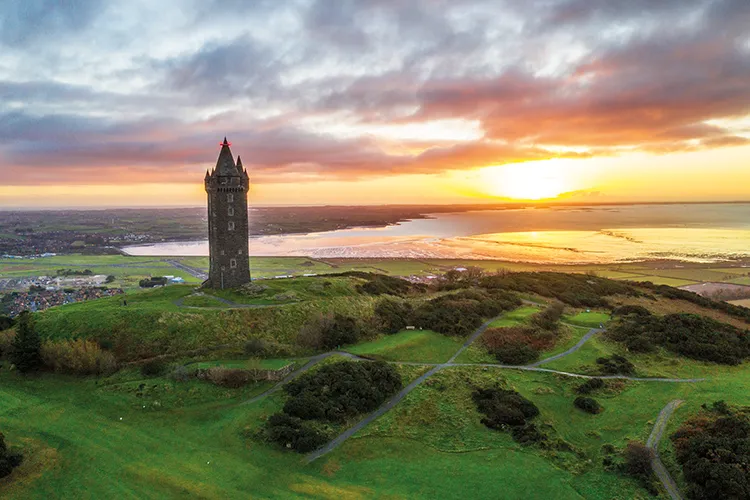
Rory Walsh explores how a Welsh mountain range became part of Stonehenge
Viewpoint • Rural • Wales • Web Guide
Stonehenge attracts more than 1.3 million visitors a year, including around 20,000 for the summer and winter solstices. Central to its global fame are enduring mysteries. The monument’s origins and purpose are still discussed, millennia after the stones were arranged. Is Stonehenge a burial site? A temple? A giant calendar? Some suggestions mention druid sacrifices and alien landings.
Part of the puzzle can be traced to Pembrokeshire. Craig Rhos-y-felin is a dramatic rock outcrop on the northern Preseli Mountains. Slabs of jagged, blue-tinged stone rise from a sloping field. ‘They could be the scales of a mythical beast – a sleeping dragon perhaps,’ suggests Mary-Ann Ochota, author of Secret Britain: Unearthing Our Mysterious Past. The remote rural spot is 225 kilometres from Stonehenge. Yet geological testing confirms that Stonehenge includes stones from Craig Rhos-y-felin.
Ochota explains: ‘Stonehenge has two main sources. The largest blocks are sarsens, a local sandstone. There’s also a smaller ring of “bluestones”, named after their colour. When struck, some of them ring like a bell. They may have been chosen and placed at Stonehenge for their acoustic qualities.’ Although dwarfed by the sarsens, the bluestones are more than two metres tall and each weigh two tonnes. How they travelled from Wales to Wiltshire is unknown.
Craig Rhos-y-felin may have been a quarry. The outcrop comprises volcanic rhyolite, which fractures into large chunks. Neolithic people could have extracted sections, then carried them away over land or by sea. Another theory is glaciation. The rock may have broken up naturally before being swept southwards by vast melting ice sheets. ‘It’s a contested site,’ Ochota says. ‘At present we cannot confirm or deny either theory.’
Enjoying this article? Check out other Discovering Britain’s…
Geologists identified the Preseli Mountains as a source for Stonehenge in 1923. A century later, technology reached even further. In August 2024, chemical analysis found that the Altar Stone, Stonehenge’s largest bluestone, came from the Orcadian Basin of northeast Scotland. ‘We now have a growing body of evidence that Stonehenge exists because of a complex network of people, ideas and resources from across the British Isles and beyond.
‘Visting Craig Rhos-y-felin is to walk in the footsteps of the ancients,’ Ochota continues. ‘Natural sites like this would have had significant power and importance for ancient people. Take a leap of imagination. Allow yourself to wonder about the events this place has seen or could have seen. Whether an archaeological or geological marvel, it’s a cool place to spend time with.’




